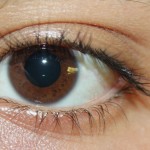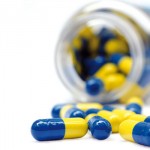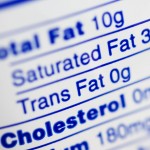Joslin Diabetes – How Gastric Surgeries Actually Work

A lot of people think that gastric surgeries work by making you eat less. True — but that’s only part of the story.

A lot of people think that gastric surgeries work by making you eat less. True — but that’s only part of the story.

In a recent survey, 57% of patients with Type 1 diabetes say they expect a cure by 2024. Why only 57%? Why should we have to wait until 2024? As a Type 1 diabetes researcher and clinician, it is my firm belief that we could have achieved insulin independence for people with Type 1 more […]

Diabetes is a global illness. This map by the Wall Street Journal shows the diabetes prevalence and related expenditures around the world. It is no surprise that the United States and Europe show the highest diabetes-related expenditures when compared to the rest of the world.

When flying with an insulin pump, you should always disconnect it during takeoff and landing. This isn’t a US FAA recommendation; this isn’t about turning off your electronic devices. And this certainly isn’t because your diabetes management makes Miss Manners uncomfortable in flight. It’s physics.

Katherine Marple was diagnosed with type 1 diabetes at age 14 in 1998. Here’s her story of how nerve-wrecking going to the optometrist can be.

A wealth of research suggests that physician communication about important topics like end-of-life care is associated with a better quality of life for patients, and a better quality of dying, with less intensive use of unnecessary tests and treatments.

A total of 182 new drugs to treat diabetes or diabetes-related conditions are currently in clinical trials or undergoing review by the U.S. Food and Drug Administration, according to a report just published by the Pharmaceutical Research and Manufacturers of America (PhRMA).

Here we go with this month’s collection of some of the top “must-read” posts that caught our eye, in no particular order.

Scientists say that to cure type 1 diabetes, we first have to stop the body’s misguided attack on the pancreas. Then we have to find a way to restore the body’s ability to produce its own insulin. My heart flutters each time I read about a new form of research …until I come to the […]

At 85, Nobel laureate James D. Watson, the co-discoverer of the double-helix structure of DNA, continues to advance intriguing scientific ideas. His latest, a hypothesis on the causation of type 2 diabetes, is to appear 7 pm Thursday US time in the online pages of The Lancet, the prestigious British medical journal.

How many times have we heard it? Many times, however, that’s all we’re told: Check your feet. What am I looking for? What do I do if I find it?!

You may not have heard of it—it isn’t as common as type 2 diabetes or gestational diabetes, or even regular type 1 diabetes— but physicians have been familiar with it for a while. Like type 1 diabetes, LADA involves the almost complete destruction of the beta producing insulin cells by the body’s own immune system.

Preparing for human clinical trials, the research pediatrician at Children’s Hospital of UPMC of Pittsburgh needs $7 million to $10 million for a multi-site trial involving 105 people with a recent diagnosis of type 1 diabetes. But federal budget cuts are making it difficult to land research grants through the National Institutes of Health.

A recent study provided scientific data to back up that hunch. A team of researchers measured the body mass index of 6,157 people, aged 50 or older in 2006 and again in 2010. They also asked each participant, whether overweight or not, whether they had experienced discrimination based on weight.

According to a recent American Diabetes Association analysis of diabetes health data, 52.5% of Hispanic women and 45.4% of Hispanic men will have Type 1 or Type 2 diabetes in their lifetimes.

While we depend on the FDA to keep us safe from unsavory medical manufacturing and drug processing practices that are rampant in other parts of the world, there are many within the diabetes community who feel the FDA is too slow to approve new diabetes products, especially when compared with its European counterpart, the European […]

The FDA is asking that the number of calories be more prominent, the amount of added sugar and percentage of whole wheat be included, and for more clarity on serving sizes. Recommended serving sizes for some foods may be adjusted.

We’re pleased to continue with our monthly recap of favorite D-blog posts from around the Diabetes Online Community (DOC) that we kicked off back several years ago. Below is the list of what caught our eye in this first month of 2014.

Some winter wisdom is about as factual as Frosty the Snowman. Problem is, these fictions don’t just give you the warm and fuzzies — they can pack on the pounds, stuff up your nose, and even increase your risk of cancer. This season, don’t let these winter health myths get the best of you.

The device scans the eye with a blue light, measuring the intensity of light emitted by the eye. When there’s too much sugar in a patient’s body, sugar molecules start binding to proteins in the lens of the eye. A higher measurement of what’s called “lens autofluorescence” corresponds to higher levels of glucose build-up in […]